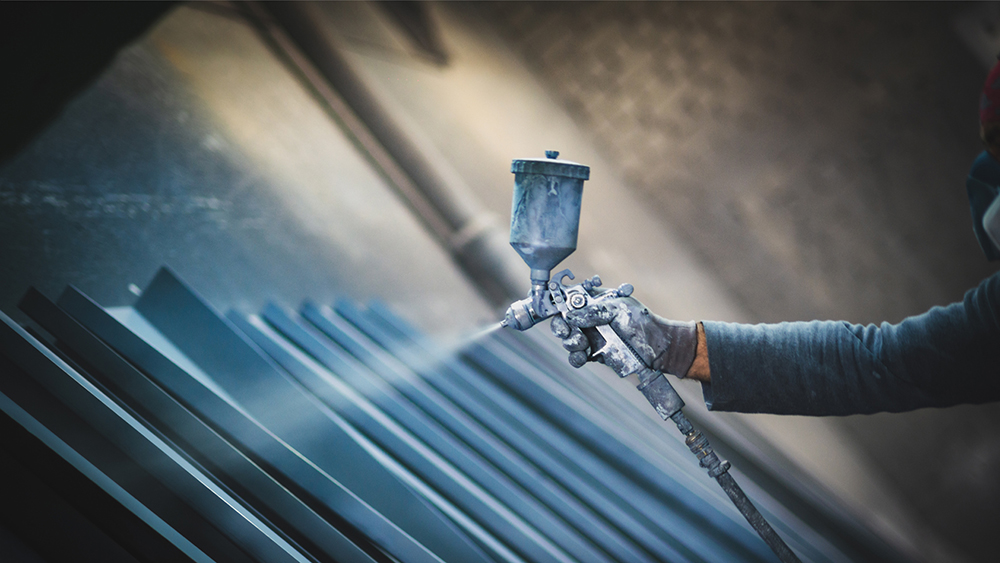Aesthetics and Protection in Metal Products: Professional Painting Processes
Painting metal products serves a dual purpose: enhancing aesthetics and providing crucial protection. Professional painting processes are essential in achieving a high-quality finish that not only makes metal products visually appealing but also extends their lifespan. The application of paint improves the appearance of metal surfaces, allowing for customization in color, texture, and gloss. This aesthetic enhancement is vital for products that need to meet specific design criteria or brand standards.
Beyond aesthetics, paint provides a protective barrier against environmental factors such as moisture, UV rays, and chemicals. This protection is crucial in preventing corrosion, rust, and other forms of deterioration that can compromise the integrity and functionality of metal products. By forming a robust shield, paint helps maintain the structural strength and durability of metals, ensuring they withstand harsh conditions and prolonged use.
The Effects of Paint Processes on Metal Surfaces
Professional painting and surface treatment processes have a significant impact on the performance and longevity of metal surfaces. These processes include surface preparation, primer application, and topcoat finishing, each playing a critical role in the overall effectiveness of the paint job.
Surface preparation involves cleaning, sanding, and sometimes blasting the metal to remove any impurities, rust, or old paint. This step is crucial for ensuring that the paint adheres properly to the metal, providing a smooth and even base for subsequent layers. Proper surface preparation enhances the bond between the paint and the metal, which is essential for long-term durability.
The application of a primer acts as an intermediary layer that further improves paint adhesion and provides additional protection against corrosion. Primers often contain anti-corrosive properties that safeguard the metal underneath, making them an indispensable part of the painting process.
The topcoat, or final layer of paint, is what gives the metal product its finished appearance and additional protective qualities. The choice of topcoat can influence the product’s resistance to scratches, UV damage, and chemical exposure. Advanced painting technology allows for the use of specialized coatings that enhance these protective qualities while also delivering a flawless aesthetic finish.
In conclusion, painting metal products is not just about aesthetics but also about providing essential protection. Professional painting processes ensure that metal surfaces are both visually appealing and resilient against environmental threats. By investing in high-quality painting, manufacturers can enhance the overall value, performance, and longevity of their metal products.
Paint Selection and Application Techniques
Choosing the right paint type is crucial for achieving optimal aesthetics and protection in metal products. Various types of paint offer different benefits, and the selection depends on the specific requirements of the project.
- Epoxy Paint: Known for its excellent adhesion, durability, and resistance to chemicals and moisture, epoxy paint is ideal for industrial applications where metal surfaces are exposed to harsh environments. It provides a tough, long-lasting coating that protects against corrosion and wear.
- Polyurethane Paint: This paint type offers superior resistance to UV rays and weathering, making it suitable for outdoor metal products. Polyurethane paint also provides a glossy, attractive finish and excellent abrasion resistance, ensuring both aesthetic appeal and durability.
- Powder Coating: A popular choice for both industrial and consumer products, powder coating involves applying a dry powder that is then cured under heat to form a hard, protective layer. This method offers a uniform, high-quality finish with excellent resistance to chipping, scratching, and fading. It is also environmentally friendly, as it produces minimal waste and contains no volatile organic compounds (VOCs).
- Acrylic Paint: Acrylic paint is versatile and dries quickly, providing a good balance of durability and aesthetic appeal. It is often used for decorative purposes and in situations where quick turnaround times are essential.
- Zinc-Rich Paint: For metals that require superior corrosion protection, zinc-rich paint is an excellent option. It offers cathodic protection, which helps prevent rust and corrosion even if the paint layer is damaged.

Application Techniques: Spray Painting, Electrostatic Powder Coating, Dipping, and Brush Methods
The effectiveness of the selected paint type depends significantly on the application technique used. Different methods provide varying levels of coverage, finish quality, and efficiency.
- Spray Painting: This technique involves using a spray gun to apply a fine mist of paint to the metal surface. Spray painting is suitable for large surfaces and complex shapes, providing an even, smooth finish. It allows for precise control over the paint application, making it ideal for achieving high-quality aesthetics.
- Electrostatic Powder Coating: In this process, an electrostatic charge is applied to the powder particles, which are then attracted to the grounded metal surface. The coated metal is subsequently cured in an oven, forming a hard, durable finish. Electrostatic powder coating is highly efficient, with minimal waste and excellent coverage, making it perfect for both small and large-scale production.
- Dipping: Dipping involves immersing the metal product into a tank of paint or coating solution. This method ensures complete coverage, even on complex or hard-to-reach areas. It is often used for applying protective coatings that require uniform thickness and consistent application.
- Brush Methods: Using brushes to apply paint is a traditional technique suitable for small projects or touch-up work. While it may not provide the same level of finish quality as spray painting or powder coating, brushing allows for precise application in detailed areas and is useful for repairs and minor adjustments.
Each paint type and application technique offers distinct advantages, and the choice depends on the specific needs of the metal product, including its intended use, environmental exposure, and desired aesthetic finish. By selecting the appropriate combination of paint and application method, manufacturers can ensure their metal products achieve both excellent aesthetics and robust protection.
Protection and Durability
The effectiveness of the selected paint type depends significantly on the application technique used. Different methods provide varying levels of coverage, finish quality control, and efficiency:
- Barrier Protection: Paint creates a physical barrier that prevents moisture, oxygen, and corrosive substances from coming into direct contact with the metal. By sealing the surface, paint reduces the likelihood of oxidation and the subsequent formation of rust.
- Chemical Protection: Some paints, such as those containing anti-corrosive pigments, offer chemical protection. These pigments inhibit the electrochemical reactions that cause corrosion. For example, zinc-rich primers provide cathodic protection by sacrificing themselves to protect the underlying metal, a process known as galvanic protection.
- UV Protection: Paint with UV-resistant properties shields the metal from harmful ultraviolet rays, which can cause degradation and weakening over time. This protection is particularly important for outdoor metal products exposed to sunlight.
- Thermal Protection: High-temperature-resistant paints protect metal surfaces from thermal degradation and oxidation caused by extreme heat. These coatings are essential for metal products used in high-temperature environments, such as exhaust systems and industrial machinery.
For more information, feel free to contact us.




